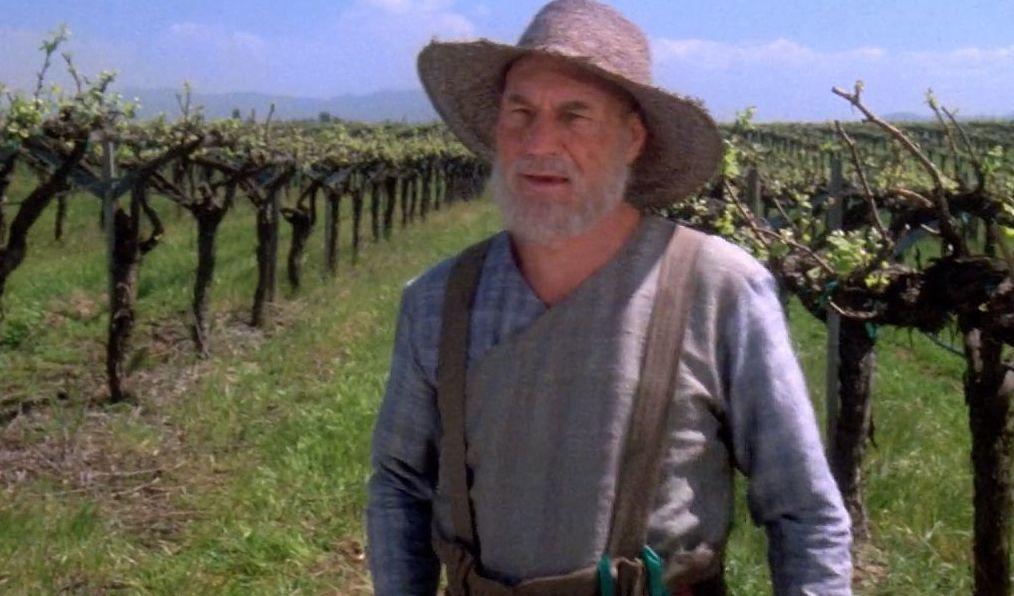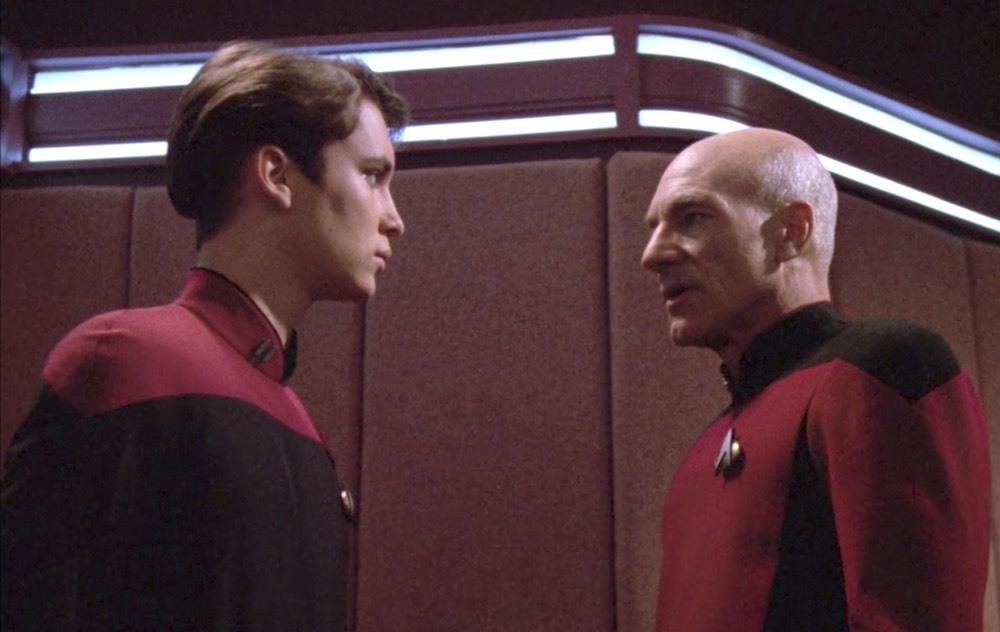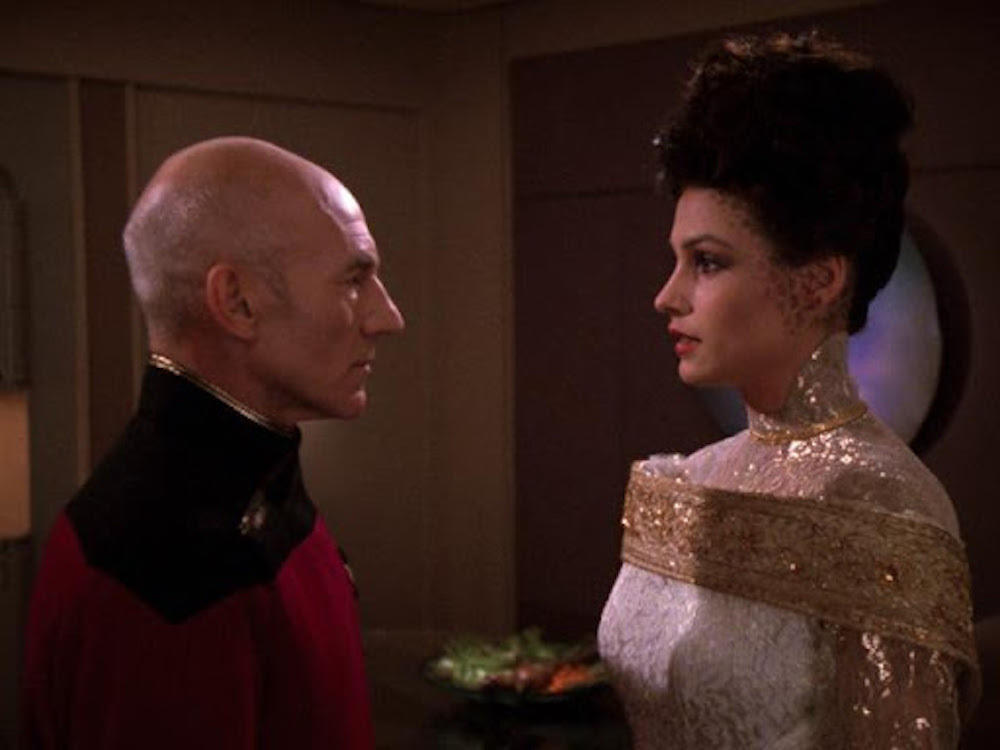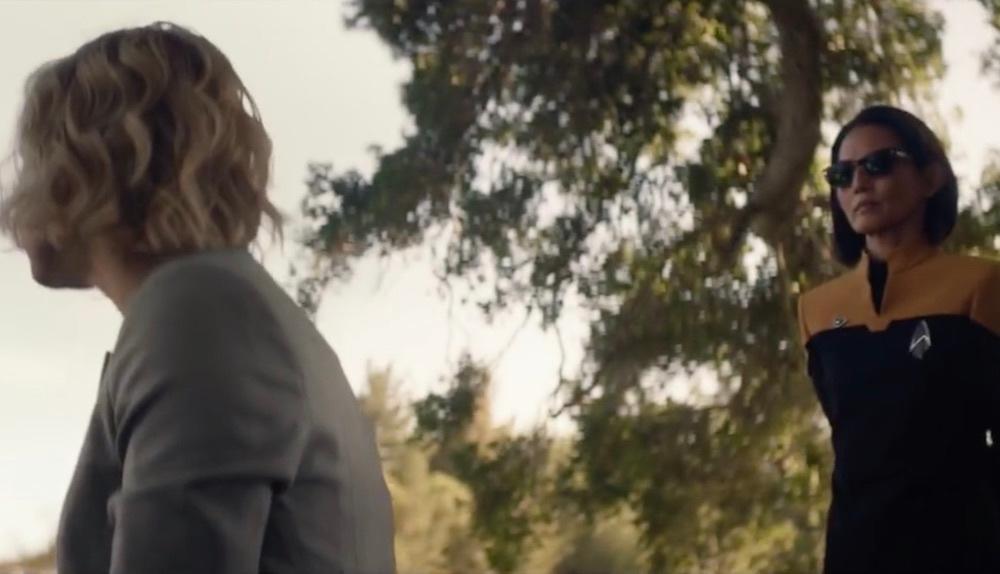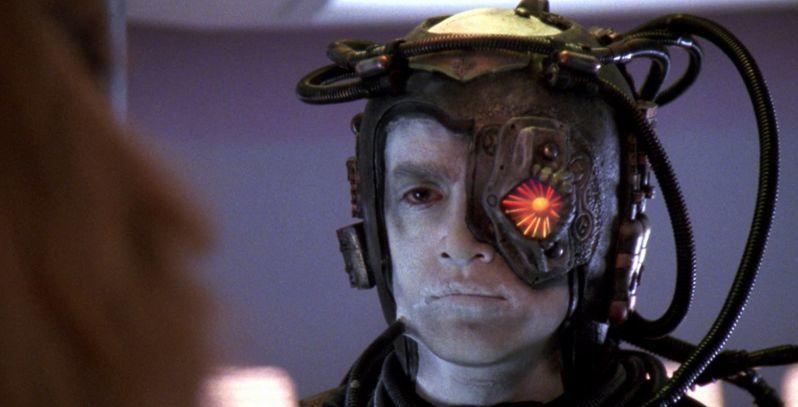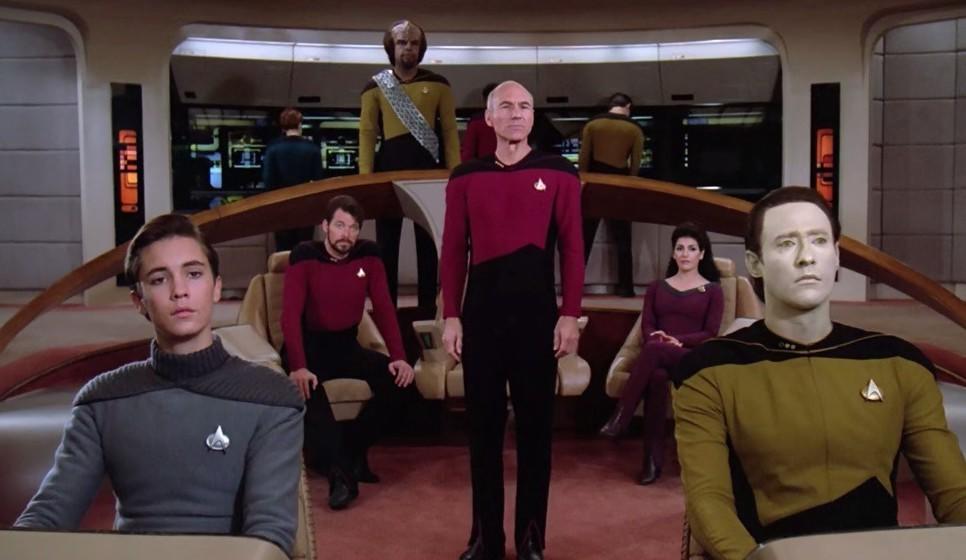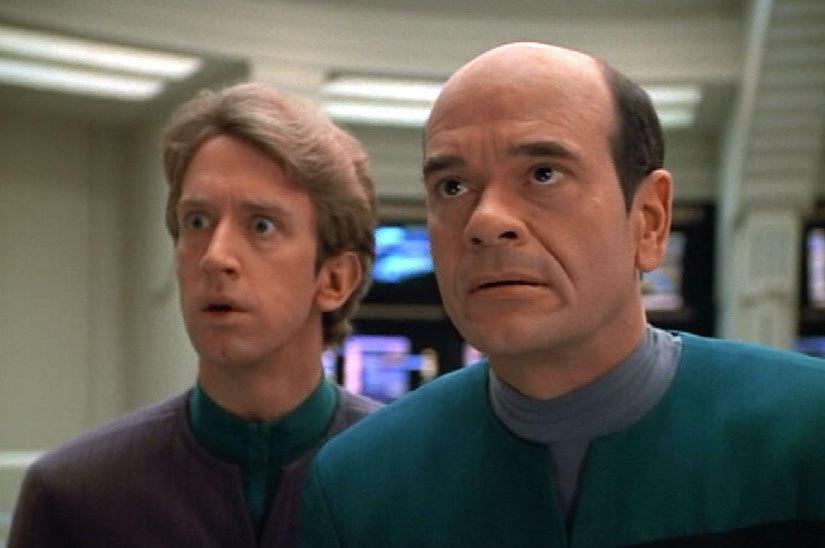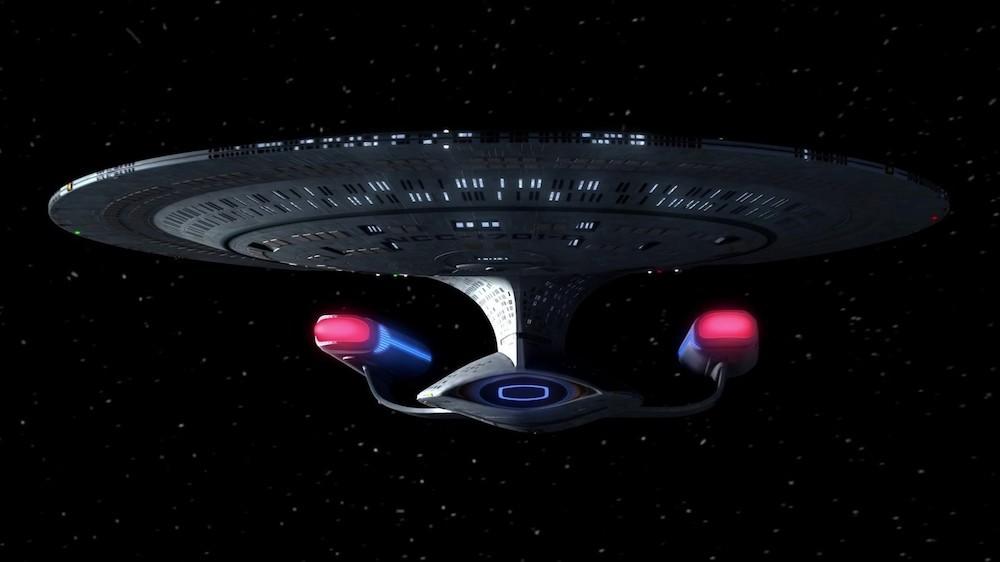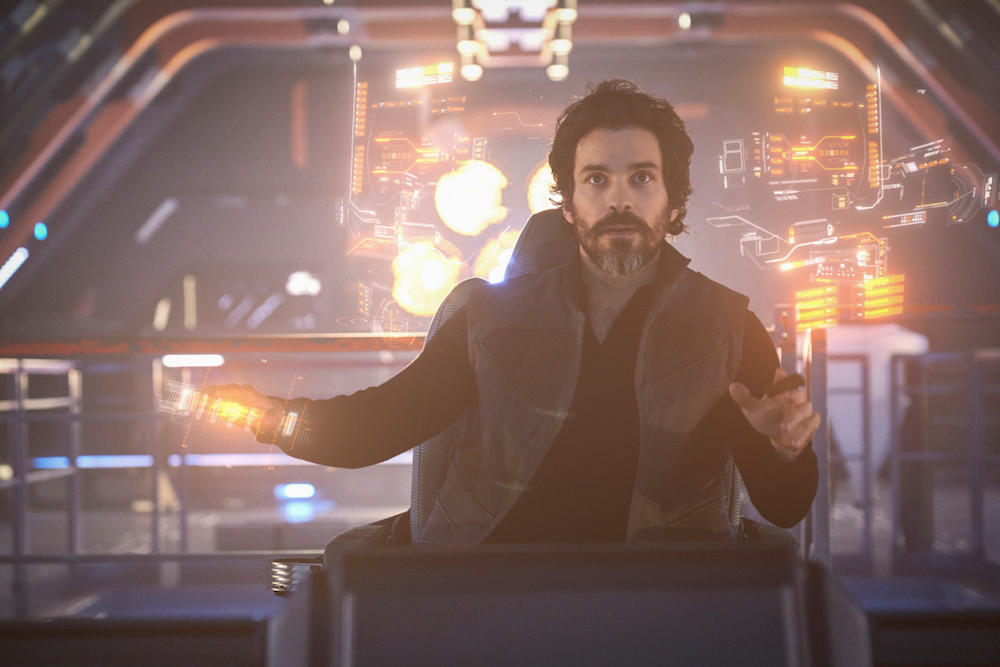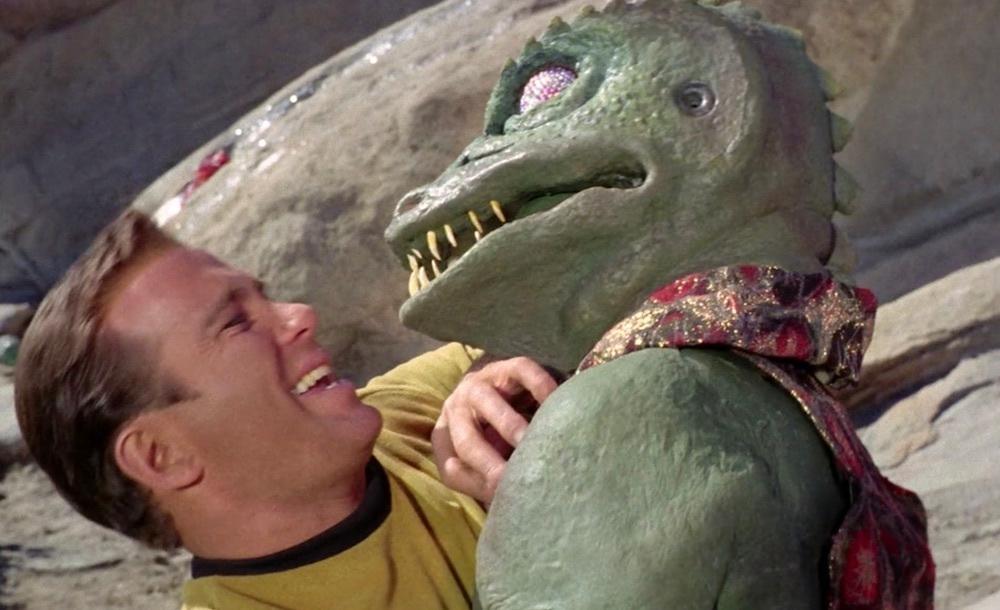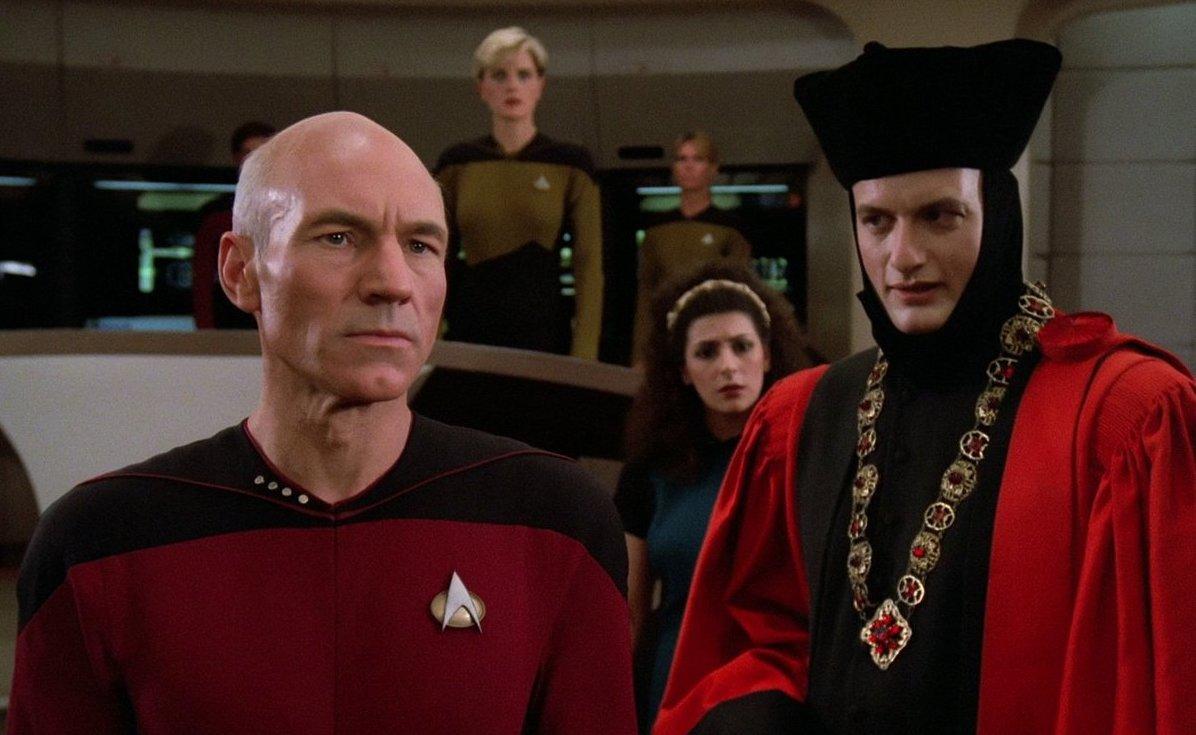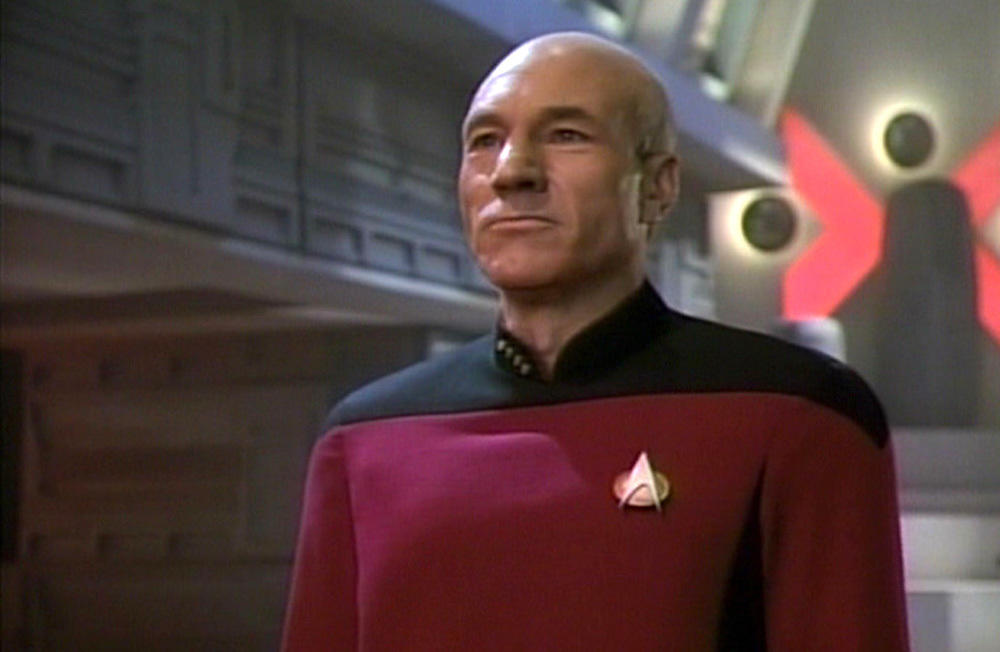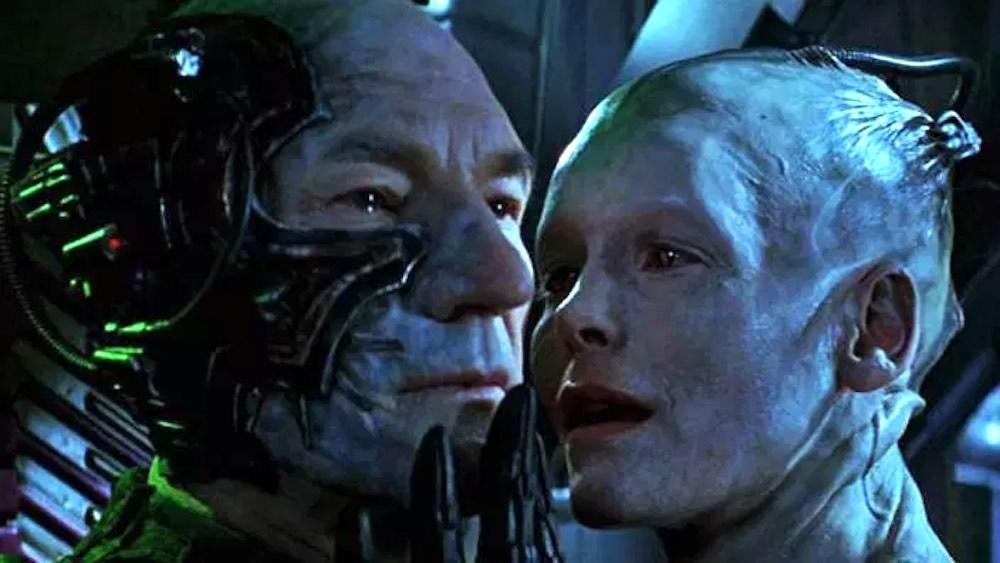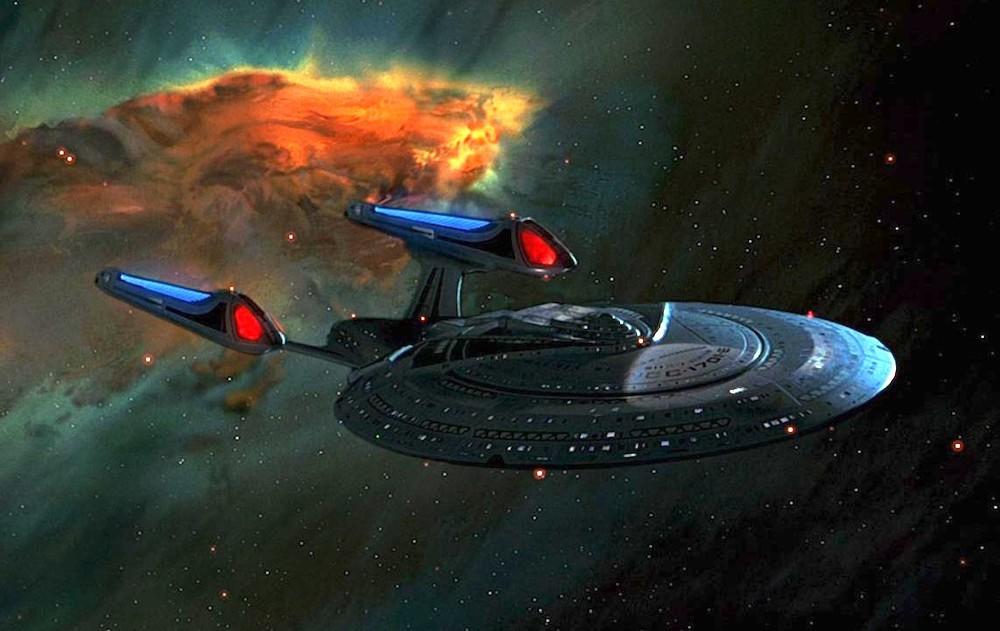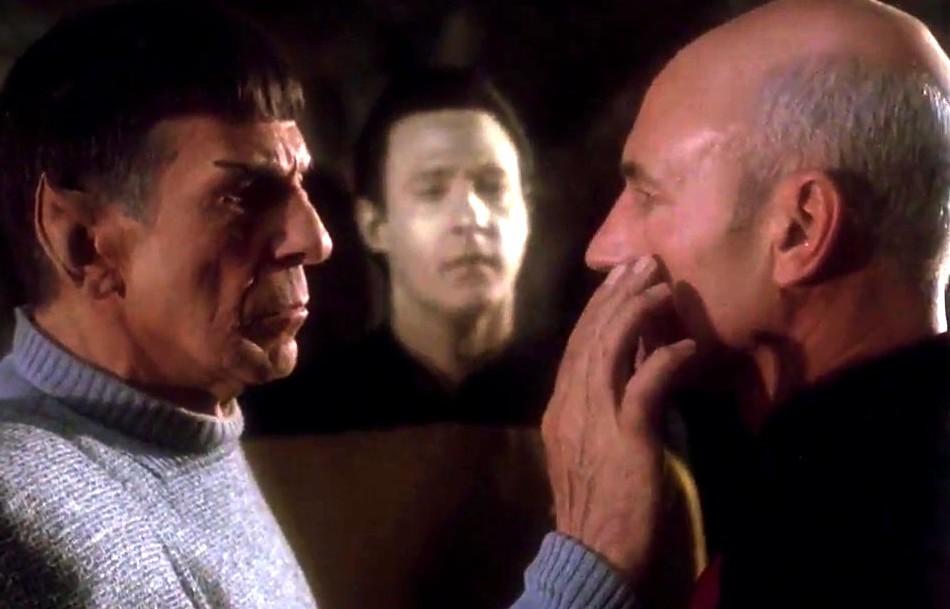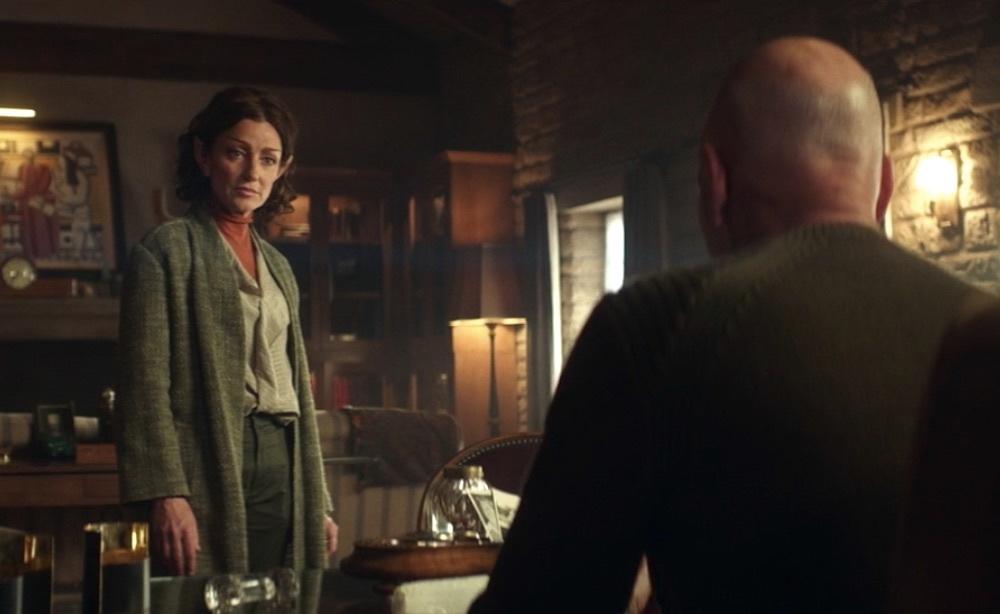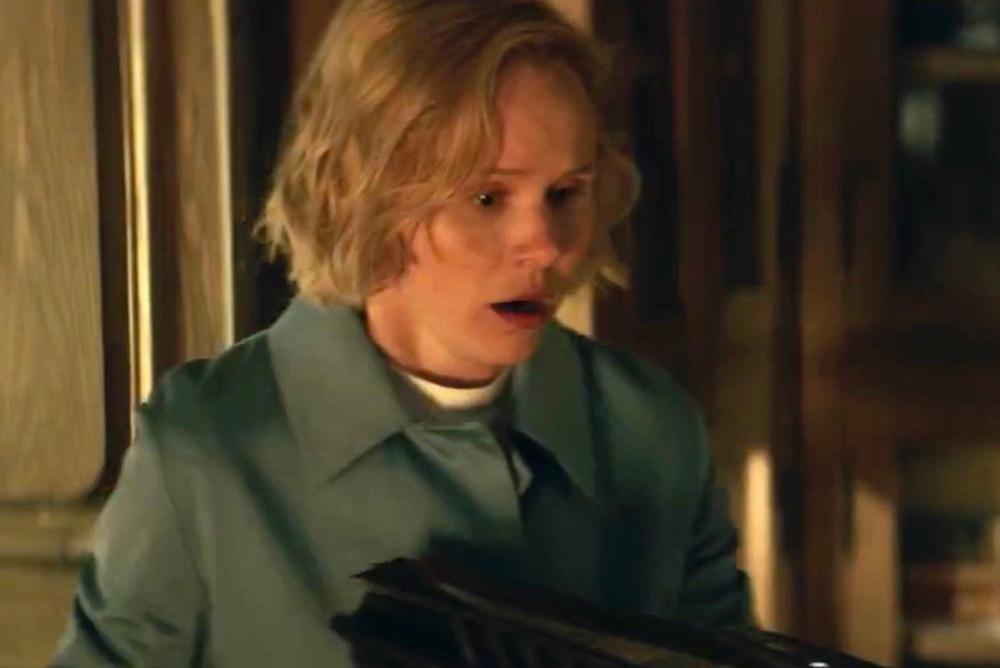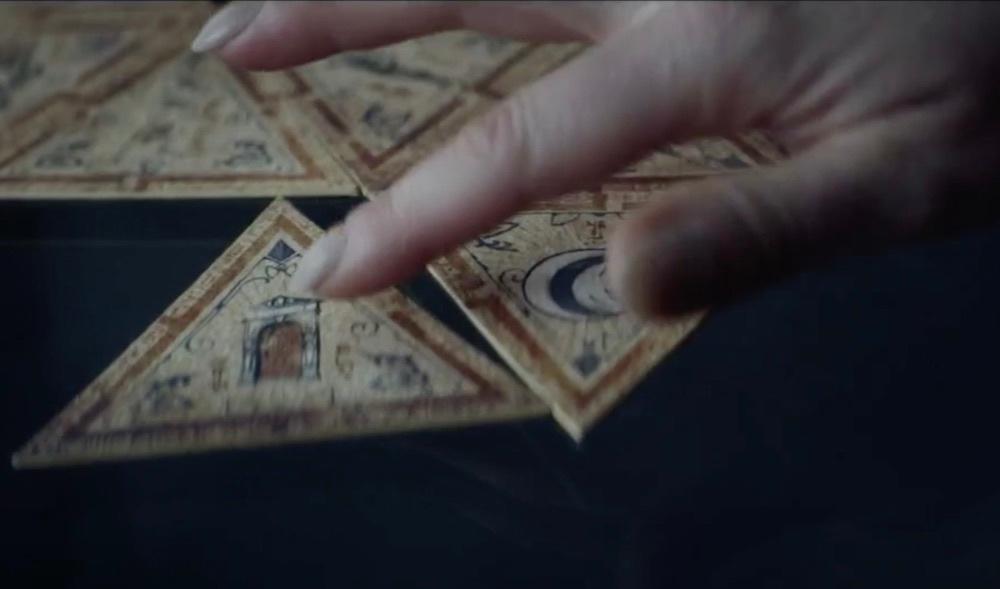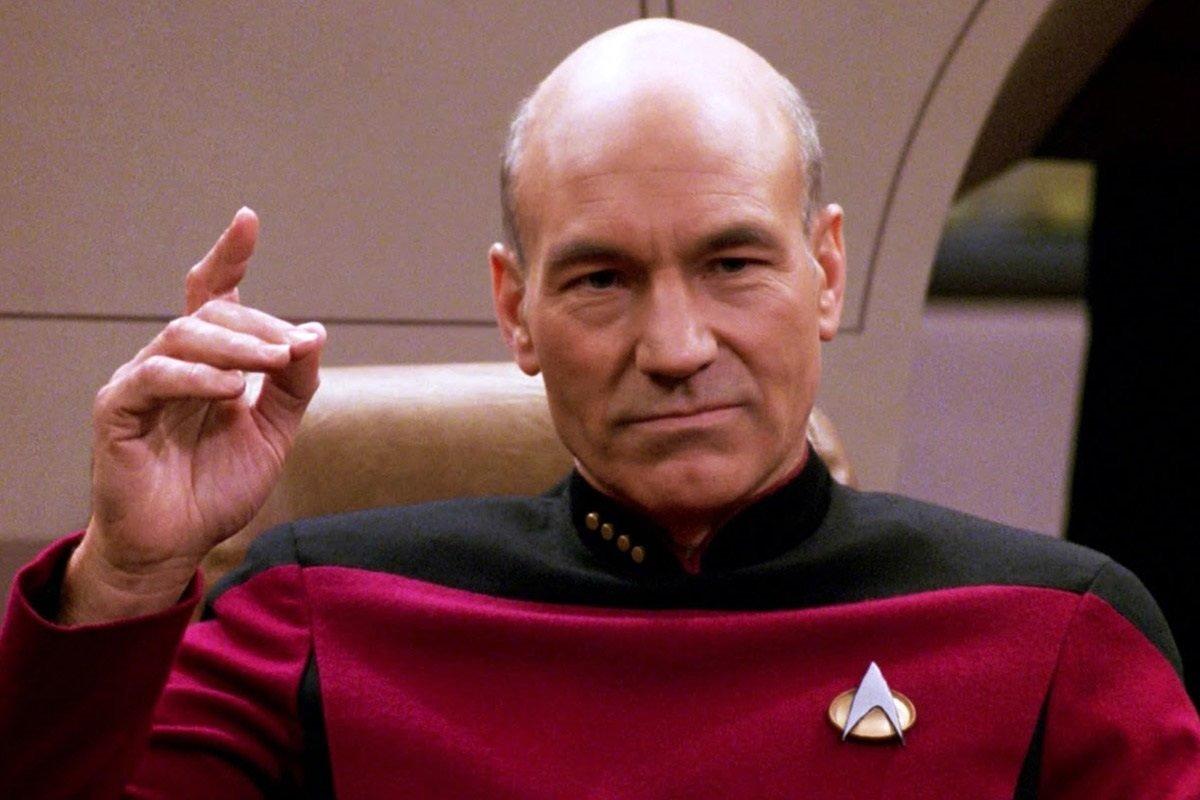Star Trek: Picard Episode 3 - 19 Easter Eggs and Trek References
GameSpot may receive revenue from affiliate and advertising partnerships for sharing this content and from purchases through links.
Star Trek: Picard's third episode, "The End is the Beginning," continues to reveal the state of the Federation in the years after The Next Generation. In the show's third entry, we get a look back at why Jean-Luc Picard resigned from Starfleet and meet a few new characters--including one that returns from past Star Trek series.
Once again, Picard makes use of lots of callbacks to the history of Star Trek and Jean-Luc's time as the captain of the Enterprise, as well as stuff that has shaped his character over the years. Here's a full rundown of all the Trek references and Easter eggs scattered throughout Episode 3.
Disclosure: ViacomCBS is GameSpot's parent company.
1. Picard's Resignation
We knew Picard left Starfleet following the destruction of the Romulan rescue armada, but in Episode 3, "The End is the Beginning," we get a little more insight into what happened. Picard didn't really leave Starfleet in protest--he tried to use his resignation as a bargaining chip to force Starfleet Command to mount the rescue mission. He and Raffi developed a plan that might still have saved the Romulans, but Starfleet didn't go for it, and Raffi was fired as a result of Picard's resignation. It seems like there's more to this story, however.
2. Not My Starfleet
After tendering his resignation, Picard tells Raffi, "I never believed Starfleet would give in to intolerance and fear." Picard's belief in the institution of Starfleet was a huge part of his character, and he lived his life by its high-minded principles. Throughout TNG, he gave speeches about the importance of the things Starfleet stood for, like when he admonished Wesley Crusher in Season 5, telling him, "The first duty of every Starfleet officer is to the truth."
3. Valtese Home Trailers
Look closely at the side of Raffi's trailer early in the episode and you might spot a bit of branding on it. Near as we can tell, the brand is "Valtese Home Trailers," suggesting the home was produced on Valt Minor. Picard helped mediate peace between Valt Minor and another planet, Krios, in the Season 5 episode "The Perfect Mate" of The Next Generation. Apparently the planet has some kind of industry for mobile homes, too.
4. The Joys Of Kasseelian Opera
At the beginning of the episode, Dr. Jurati is listening to Kasseelian opera, which the writers first introduced in Star Trek: Discovery. The specific aria that Jurati listens to was one of Dr. Culber's favorites; we first hear it in Discovery's Season 2 premiere, "Brother.
5. Hugh Returns
Though he doesn't get much in the way of introduction, we meet a returning character from The Next Generation in Star Trek: Picard's third episode: Hugh. Jean-Luc and the Enterprise crew discovered Hugh when he was a young Borg drone after his ship crashed, killing the other Borg drones aboard. Picard and his crew rescued Hugh with the intention of sending him back to the collective with a sort of computer virus that could destroy the Borg Collective, wiping out a mortal threat to the Federation--but during the course of his time with them, Hugh developed individuality. Picard abandoned the plan to destroy the Borg and offered to let him stay aboard the Enterprise, but Hugh opted to return to the Borg so that the Enterprise wouldn't be discovered.
Hugh's return to the Borg threw the Collective into disarray as his individuality spread to other drones. The resulting confusion left the Borg vulnerable to outside influences--which is when Data's brother, Lore, found them. Lore talked the Borg into following him as he led them toward a goal on a path to become fully artificial. Eventually, the Enterprise crew discovered the Borg and found Hugh again, who helped them stop Lore.
Afterward, it was suggested that Hugh would become the leader of the freed Borg. We don't know what's happened since then, but it seems Hugh eventually had his implants removed and his humanity restored. It sounds like he had a hard time reintegrating into society, however.
6. Back In Space
When Picard meets Rios, he finds himself back in space for the first time in years, and it's clearly a bit like coming home for the captain. A musical cue of the Star Trek theme picks up to mark the power of the occasion for Picard.
7. Emergency Medical Holograms (And More)
Star Trek: Voyager established a special computer program aboard Starfleet vessels known as the Emergency Medical Hologram--essentially, a holographic doctor. It seems that other holographic programs have been created to help keep ships running in emergencies.
8. A Tritanium Injury
When we first meet Rios, he's dealing with a bit of a problem: a chunk of metal embedded in his shoulder. Rios mentions that it's a piece of tritanium shrapnel. Star Trek fans will recognize that particular metal--it's the material used in building a lot of starships, including Federation ships.
9. The Tragic Sense Of Life
When Picard visits Rios's ship, he sees the pilot is reading a philosophy book called "The Tragic Sense of Life." The 1912 work by Miguel de Unamuno centers on the idea that many people live tragically as they fight against the inevitability of death, and work to find a way to preserve their legacy beyond themselves. The work also deals with what Unamuno sees as the differences between faith and reason. It seems Rios is a bit of a philosopher at heart, and it's hard to ignore the symbolism of the work for Jean-Luc Picard, who is himself a living legend struggling with the choice he's made and the legacy he will leave behind.
10. A Gorn Egg
As Raffi is working through the encryptions Bruce Maddox has left behind on his files, she discovers a program labeled "Gorn Egg." Though it's just the name of an encryption program, the name "Gorn egg" is another reference to Kirk's famous fight with a Gorn in the "Arena" episode of the original series.
11. Chief Contact With The Q Continuum
After Picard's meeting with Rios, the pilot has a conversation with his Emergency Navigational Hologram that lays out some of Rios's feelings about the captain. Through the discussion, the ENH lays out a bunch of Picard's accomplishments from his years in The Next Generation. Picard was "Chief Contact with the Q Continuum," thanks to Q's repeated interactions with the Enterprise crew.
12. Arbiter of Succession For The Klingon Empire
In Season 4, Picard served the Klingon high council as its Arbiter of Succession--an impartial judge who helped administer Klingon law and choose a new chancellor, the Klingon's leader.
13. Savior Of The Earth From Borg Invasion
Picard was instrumental in stopping the Borg on several occasions. After he was assimilated in Season 3 and turned into Locutus of Borg, Picard inadvertently helped the Borg destroy a Federation fleet at Wolf 359. The Enterprise crew saved Picard, and as he was being rescued, he helped Data send a signal to the Borg Collective that essentially put the attacking Borg Cube to sleep, destroying it.
In Star Trek: First Contact, Picard and the crew again stopped the Borg, this time from using time travel to assimilate humanity in its past and prevent the creation of the Federation.
14. Captain Of The Enterprise D and E
In The Next Generation, Picard served as the captain of the Enterprise-D, the fourth ship to bear that designation. It was destroyed in the movie Star Trek: Generations, and in the movies that followed, he took command of a new Enterprise, the Enterprise-E.
15. A Colleague Of Spock
Though Spock appeared in the original Star Trek series, which takes place about 100 years before The Next Generation, the Vulcan appears in Season 4 of TNG, thanks to Vulcans' long lifespan. In the three-episode "Unification" arc, Spock leaves his post as a Federation ambassador and seemingly defects to Romulus. Picard and Data are ordered to locate Spock and find out what's going on, and head to Romulus in Romulan disguises to find him. The Vulcans and the Romulans had once been the same people centuries earlier, before separating to become two different cultures. It turned out that Spock was working with dissidents who wanted to reunify the Romulans and Vulcans, but the whole thing turned out to be a Romulan trap.
16. Ready for Action
The siege on Picard's home is so fast-paced that you may not have noticed a dark, funny detail: Picard's caretakers, Laris and Zhaban, stashed guns in the house, like under the coffee table. As two former Tal Shiar agents, this shouldn't come as too much of a surprise. But it's a great reminder that this mild-mannered pair (which steals every scene it's in) are more tactically capable than they might appear at first glance.
17. Always Set To "Kill"
One of the best aspects of Star Trek: Picard is how it fleshes out Romulan lore. Until now, much of what we've known about the Romulans is surface level; historically, they've been hostile towards the Federation, but much of their practice remains shrouded in secrecy.
There is a nice world-building detail after Dr. Jurati shoots a Romulan with a disruptor. She drops the weapon and immediately tries to reassure herself that it was set to "stun." Laris bursts her bubble, noting that Romulan weapons don't have a stun setting. It reinforces what we already knew about the Romulans' militarism. Theirs is the type of culture that would err on the side of killing an enemy rather than bringing him or her to justice.
18. False Door
While studying a former Borg patient, Shoji notes that Romulan homes have false front doors; it is customary for people to enter a Romulan house through the back door. This is a nod to Star Trek: The Next Generation, where the Romulans were nearly always portrayed as duplicitous schemers who had different, ruthless means of achieving the same goal.
19. "Engage"
Episode 3 finally sees Picard on the bridge of a ship and leading a crew--of sorts. The episode ends with the captain giving his famous order from his years on TNG: "Engage." With the TNG theme rising in the background, we finally see Picard returning to where he belongs.

